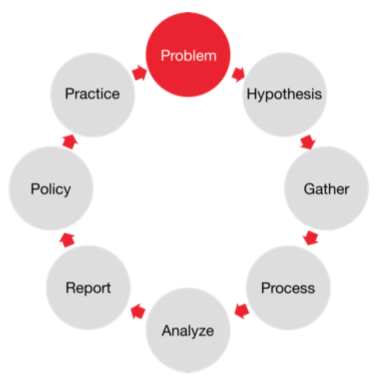
Identifying and prioritizing problems to be addressed through research currently involves a host of individual, social, and political processes. Currently, such processes can just as easily be driven by idiosyncratic interests and events or indirect political interests as they can by rational analyses based on solid empirical foundations.
Fully automating this phase of the research process will take many years of effort, but even now there are things that might be done to place problem identification in a more rational and data-driven framework. Identifying, specifying, and prioritizing problems may be made more empirically based by identifying those populations with the most relevant information and/or perspectives on the learning landscape and then systematically gathering their input.
For example, if the effort is to understand the priorities for improving the formal educational experience in classrooms, the relevant populations might be teachers and students. Systematically gathering teachers’ and students’ inputs might involve embedded survey systems, prediction exchanges, and crowd-sourcing models of engagement. The goal is to make the gathering of information on problems formal, systematic, and ultimately automated.
Of course, when it comes to setting priorities for the educational system, the relevant group to involve might be the general population. Engaging members of the public systematically through automated processes could allow them to be genuinely engaged and such involvement could simultaneously build support for the identified priorities. In their book New Power, Jeremy Heimans and Henry Times note that the distribution of power around the world is shifting and the there is arising what they call “new power” which they define as “the deployment of mass participation and peer coordination to create change and shift outcomes.” For more on new power see Jeremy’s TED talk below.
It is encouraging that conditions seem to be moving in a direction that might make mass participation in an automated system for identifying and prioritizing problems more likely. Advancing social conditions and available technologies can support the kind of automated problem identification activities that will be necessary for automating the educational research and development cycle.


Be the first to comment